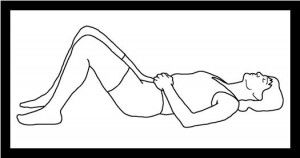 Molly’s been sharing a lot about how to be a better belter in her Belting series, so I thought I’d share a little about what I’ve been learning about breath support. Knowing how to breathe correctly is super important for a singer. Some of what I’ve been learning is a little more on the technical side, but it’s such an important aspect to what we do as performers, that I thought I’d pass what I’ve been learning along here on the blog.
Molly’s been sharing a lot about how to be a better belter in her Belting series, so I thought I’d share a little about what I’ve been learning about breath support. Knowing how to breathe correctly is super important for a singer. Some of what I’ve been learning is a little more on the technical side, but it’s such an important aspect to what we do as performers, that I thought I’d pass what I’ve been learning along here on the blog.
First, let me start off with some technical terms.
It’s important to know that there are two sets, the “internal” and “external” intercostal muscles.
Internal Intercostal Muscles: The internal intercostal muscles are the exhaling muscles, and pull the ribs diagonally down and back on both sides of the body. They work with the abdomen in the process of exhaling.
External intercostal muscles: The external intercostal muscles are the inhaling muscles. They lift the ribs and pull upward and back. These are the muscles, primarily in the back, that are used to widen the ribs. They work with the diaphragm in the process of inhaling.
Abdomen: The abdominal muscles pull in the stomach and prevent bulging due to pressure caused by the internal intercostal muscles. There are three layers of abdominal muscles with fibers running in different directions. Together, they work to tighten the stomach and push out air.
Diaphragm: The diaphragm provides a flexible, movable base on which the lungs and heart rest. When fibers of the diaphragm tense, they pull the central tendon downward, creating more space in the chest cavity, allowing air to rush in.
Using these muscles and learning how to balance them while breathing is the technique referred to as diaphragmatic breathing, or breath support. As the exhaling muscles are drawing in, the inhaling muscles are expanding, creating a slower, more controlled exhalation. This technique helps support breath through longer musical phrases. It’s also a great help for those who involuntarily use a breathy tone. By releasing less air it allows for an even flow of breath, which produces a brighter, clearer sound.
Other additional benefits of diaphragmatic breathing include:
- Increasing oxygen levels
- Reducing stress and anxiety levels caused by shallow “upside-down” breathing
- Relieving muscle tension
- Improving sleep
I’ve also learned a few techniques that are really helpful to achieve diaphragmatic breathing, and I thought I’d share what exercises have worked the best for me, with you.
1. Lie flat on the ground with knees bent and feet touching the floor. As you breathe, notice how your stomach rises and falls—you are breathing from your diaphragm.
2. Stand in a comfortable position with shoulders back and relaxed down. Position your feet parallel, hip-width apart. Now imagine you are sucking the air through a straw, filling your stomach with the air you breathe. As you breathe in this way, your diaphragm expands.
3. Stand in the same position as #2. Inhale a breath expanding your stomach and ribs for four seconds. At the same time, raise your arms from your sides to above your head (as if you were doing a jumping jack). When your arms are fully raised, hold in your breath with your arms above your head for eight seconds. Then release the air slowly for 7 seconds. While exhaling, bring your arms back down to their beginning position, keeping your ribs expanded.
4. Sit in a chair with your head resting on your lap. Breathe in slowly. This position forces you to breathe with your diaphragm. You should be able to feel your stomach expanding. Maintaining this breathing control, move to a standing position.
Just like any athlete, we need to strengthen the right muscles to produce desired results. It may seem strange to breathe this way, but I promise you, you’ll see a difference!
-A teen who likes to shimmer and shine!
Jes DeGroot
